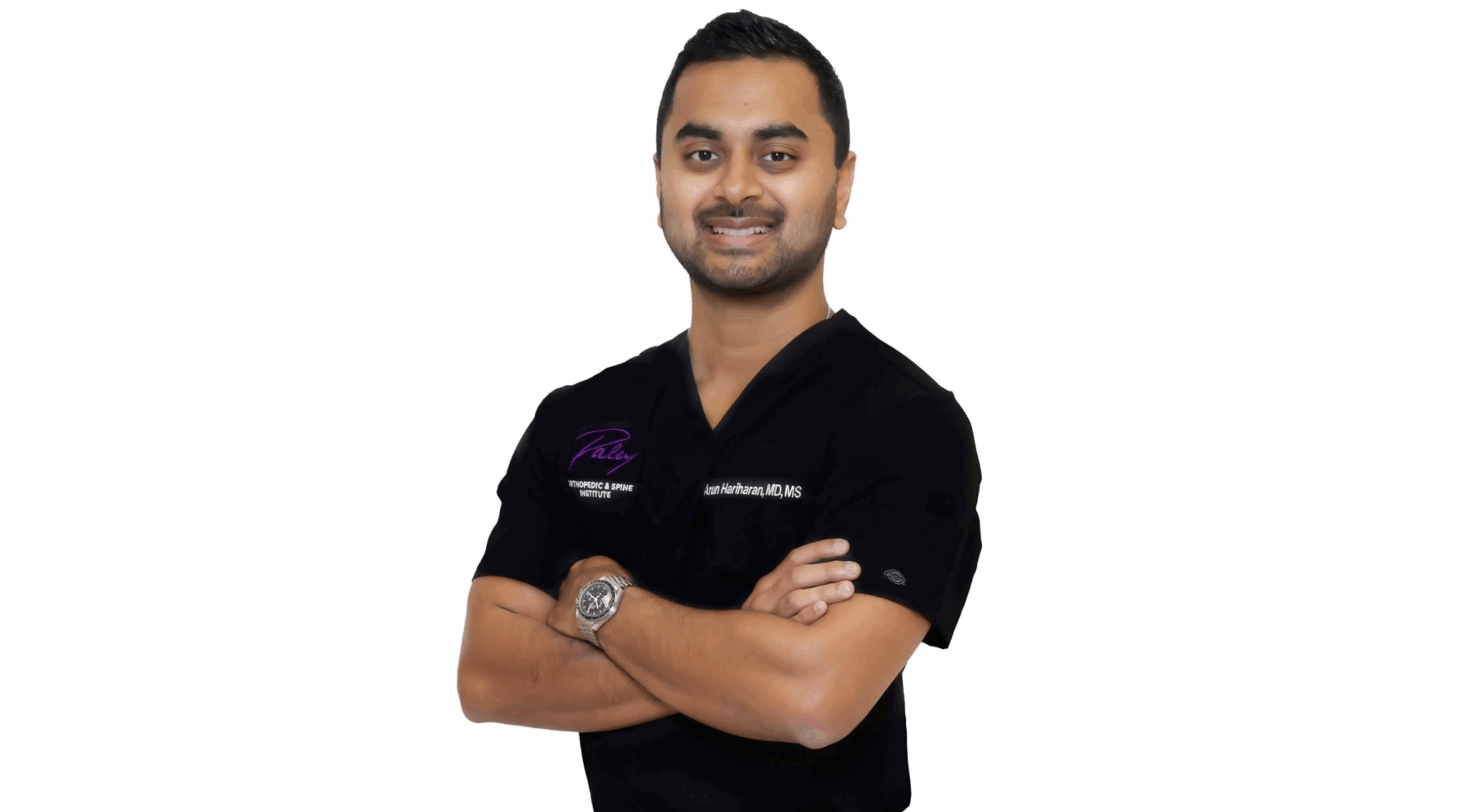Expert shares knowledge of surgery for SMA-related scoliosis
Orthopedic and spine surgeon has vast experience working with children, teens
Written by |

Arun Hariharan, MD, specializes in complex spinal deformities, including care for children with SMA. (Courtesy of Arun Hariharan)
Spinal surgery is often a major consideration for children and teens with spinal muscular atrophy (SMA) who develop scoliosis, a complication that can affect comfort, posture, and breathing.
To better understand this step in SMA care, SMA News Today spoke with Arun Hariharan, MD, a pediatric orthopedic and spine surgeon at the Paley Orthopedic and Spine Institute in West Palm Beach, Florida. He specializes in complex spinal deformities, including care for children with SMA and other neuromuscular conditions.
“I’ve been working with children and teens affected by SMA and other rare neuromuscular disorders since my residency and fellowship training, and have continued to do so in my current role,” he says. “It’s a patient population I’m deeply committed to, from early conservative care to complex surgical planning and recovery.”
The interview was excerpted and lightly edited for clarity.
SS: When is spine surgery considered for children or teens with spinal muscular atrophy?
AH: With today’s advances in [SMA medications], kids with SMA are living longer and gaining more function than ever before. But even with these disease-modifying therapies, scoliosis remains common, especially in nonambulatory children.
We usually consider spinal surgery when the curve progresses and begins to interfere with sitting, posture, or breathing, often during the growth-spurt years. We know scoliosis can be rapidly progressive in this population, so as soon as there is evidence of curve progression beyond 40 degrees, we start the surgical discussions.
Bracing or wheelchair modifications can help for a while, but when they’re no longer effective, surgery is the next step to maintain function and comfort.
What symptoms can improve or stabilize with surgery?
Surgery can improve sitting balance, reduce pain from spinal collapse, and make it easier to use wheelchairs or assistive devices.
While it won’t restore muscle or neurological strength, stabilizing the spine helps preserve what the child already has. In some cases, it can even support better breathing by preventing further thoracic and rib cage deformity.
Are there unique considerations in planning surgery for a child with SMA?
Yes. Bone fragility, small body size, nutrition, and respiratory issues all require careful planning. Many of these kids are on noninvasive ventilation and have low weights and poor nutritional status, so we coordinate closely with pulmonologists, anesthesiologists, gastroenterologists, nutritionists, therapists, and neurologists.
Every detail matters, from implant selection to how we position them during surgery. In very young or small children, growth-preserving techniques, such as traditional growing rods or magnetic growing rods, may be required.
What could prevent a child from getting surgery?
Health optimization is key. If a child has poor nutrition, unmanaged pulmonary issues, or has been sick recently, we may delay surgery until they’re ready.
Another challenge is insurance approval or lack of access to specialized pediatric spine centers. We work closely with families to get these barriers addressed early.
What are families most concerned about?
Families often worry about the risks, especially anesthesia and the recovery process. They also want to know how much flexibility or function might be lost.
I help them understand that the goal is to preserve what the child already has. Surgery is a tool to protect long-term quality of life, not a fix for weakness. Many families find it reassuring to hear from others who’ve already gone through it.
How can families prepare for recovery at home?
Post-op recovery is manageable but requires planning. Most kids will need help with transfers, positioning, and pain control for a few weeks. If the child uses a wheelchair, it may need adjustments.
We also set up follow-up therapy and give families detailed instructions to help them feel confident at home.








